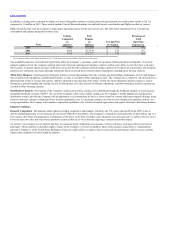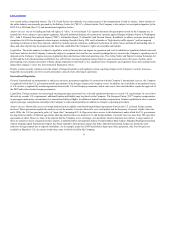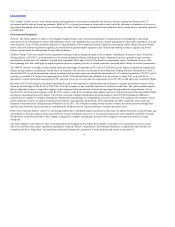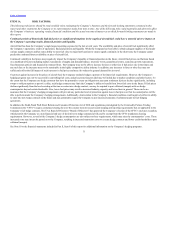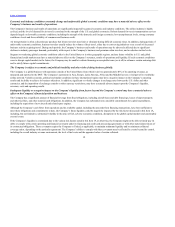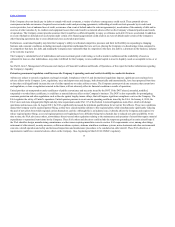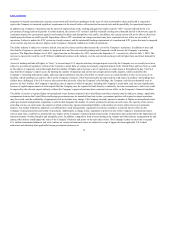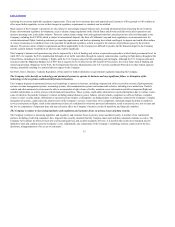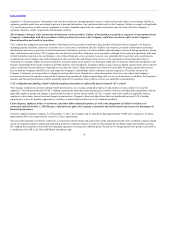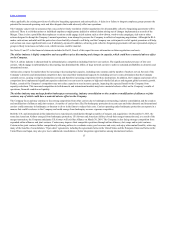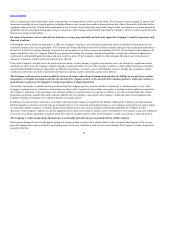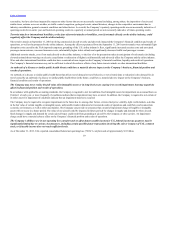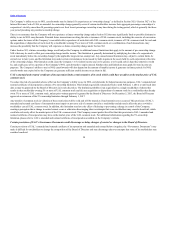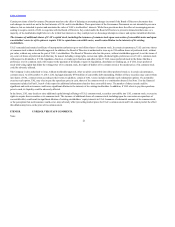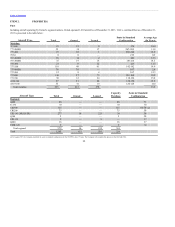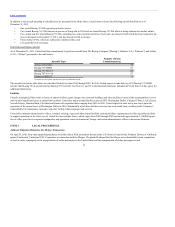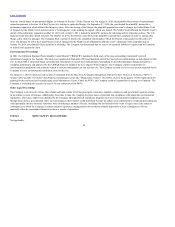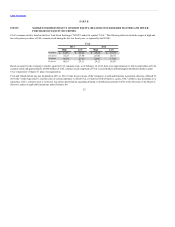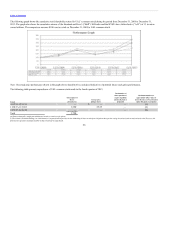United Airlines 2013 Annual Report Download - page 16
Download and view the complete annual report
Please find page 16 of the 2013 United Airlines annual report below. You can navigate through the pages in the report by either clicking on the pages listed below, or by using the keyword search tool below to find specific information within the annual report.
Table of Contents
employees’ or business partners’ information. Any such loss, disclosure, misappropriation or access could result in legal claims or proceedings, liability or
regulatory penalties under laws protecting the privacy of personal information. Any significant data breach or the Company’s failure to comply with applicable
U.S. and foreign privacy or data security regulations or security standards imposed by our commercial partners may adversely affect the Company’s
reputation, business, results of operations and financial condition.
The Company’s business relies extensively on third-party service providers. Failure of these parties to perform as expected, or interruptions in the
Company’s relationships with these providers or their provision of services to the Company, could have an adverse effect on the Company’s
financial position and results of operations.
The Company has engaged an increasing number of third-party service providers to perform a large number of functions that are integral to its business,
including regional operations, operation of customer service call centers, distribution and sale of airline seat inventory, provision of information technology
infrastructure and services, provision of aircraft maintenance and repairs, provision of various utilities and performance of aircraft fueling operations, among
other vital functions and services. The Company does not directly control these third-party service providers, although it does enter into agreements with many
of them that define expected service performance. Any of these third-party service providers, however, may materially fail to meet their service performance
commitments to the Company, may suffer disruptions to their systems that could impact their services, or the agreements with such providers may be
terminated. For example, flight reservations booked by customers and/or travel agencies via third-party GDSs may be adversely affected by disruptions in the
business relationships between the Company and GDS operators. Such disruptions, including a failure to agree upon acceptable contract terms when contracts
expire or otherwise become subject to renegotiation, may cause the carriers’ flight information to be limited or unavailable for display, significantly increase
fees for both the Company and GDS users, and impair the Company’s relationships with its customers and travel agencies. The failure of any of the
Company’s third-party service providers to adequately perform their service obligations, or other interruptions of services, may reduce the Company’s
revenues and increase its expenses or prevent the Company from operating its flights and providing other services to its customers. In addition, the Company’s
business and financial performance could be materially harmed if its customers believe that its services are unreliable or unsatisfactory.
UAL’s obligations for funding United’s defined benefit pension plans are affected by factors beyond UAL’s control.
The Company maintains two primary defined benefit pension plans, one covering certain pilot employees and another covering certain U.S. non-pilot
employees. The timing and amount of UAL’s funding requirements under these plans depend upon a number of factors, including labor negotiations with the
applicable employee groups and changes to pension plan benefits as well as factors outside of UAL’s control, such as the number of applicable retiring
employees, asset returns, interest rates and changes in pension laws. Changes to these and other factors that can significantly increase UAL’s funding
requirements, such as its liquidity requirements, could have a material adverse effect on UAL’s financial condition.
Union disputes, employee strikes or slowdowns, and other labor-related disruptions, as well as the integration of United’s workforces in
connection with the October 1, 2010 Merger, could adversely affect the Company’s operations and could result in increased costs that impair its
financial performance.
United is a highly unionized company. As of December 31, 2013, the Company and its subsidiaries had approximately 87,000 active employees, of whom
approximately 80% were represented by various U.S. labor organizations.
The successful integration of United’s workforces in connection with the Merger and achievement of the anticipated benefits of the combined company depend
in part on integrating employee groups and maintaining productive employee relations. In order to fully integrate the pre-Merger represented employee groups,
the Company must negotiate a joint collective bargaining agreement covering each combined group. The process for integrating the labor groups is governed by
a combination of the RLA, the McCaskill-Bond Amendment, and
16


